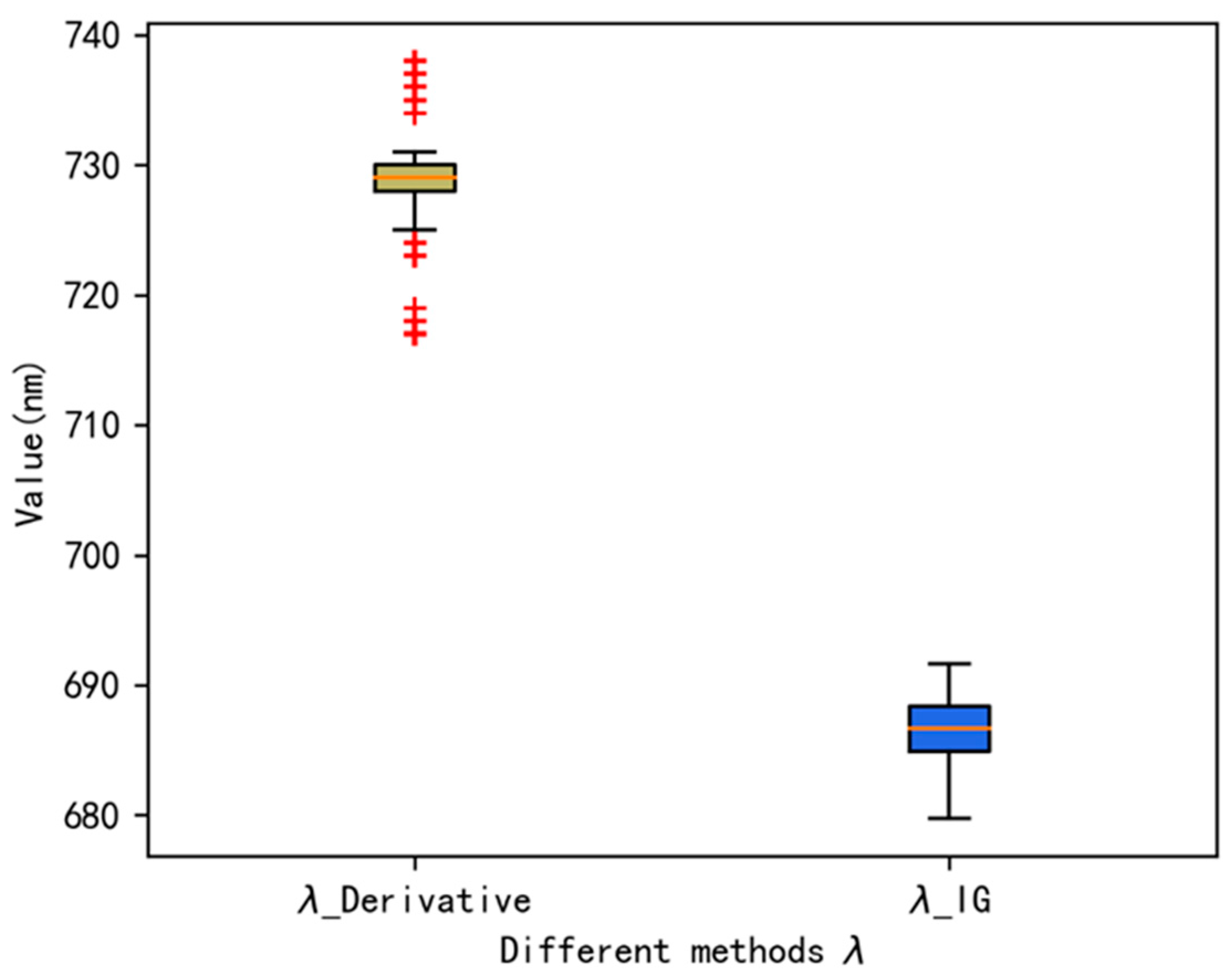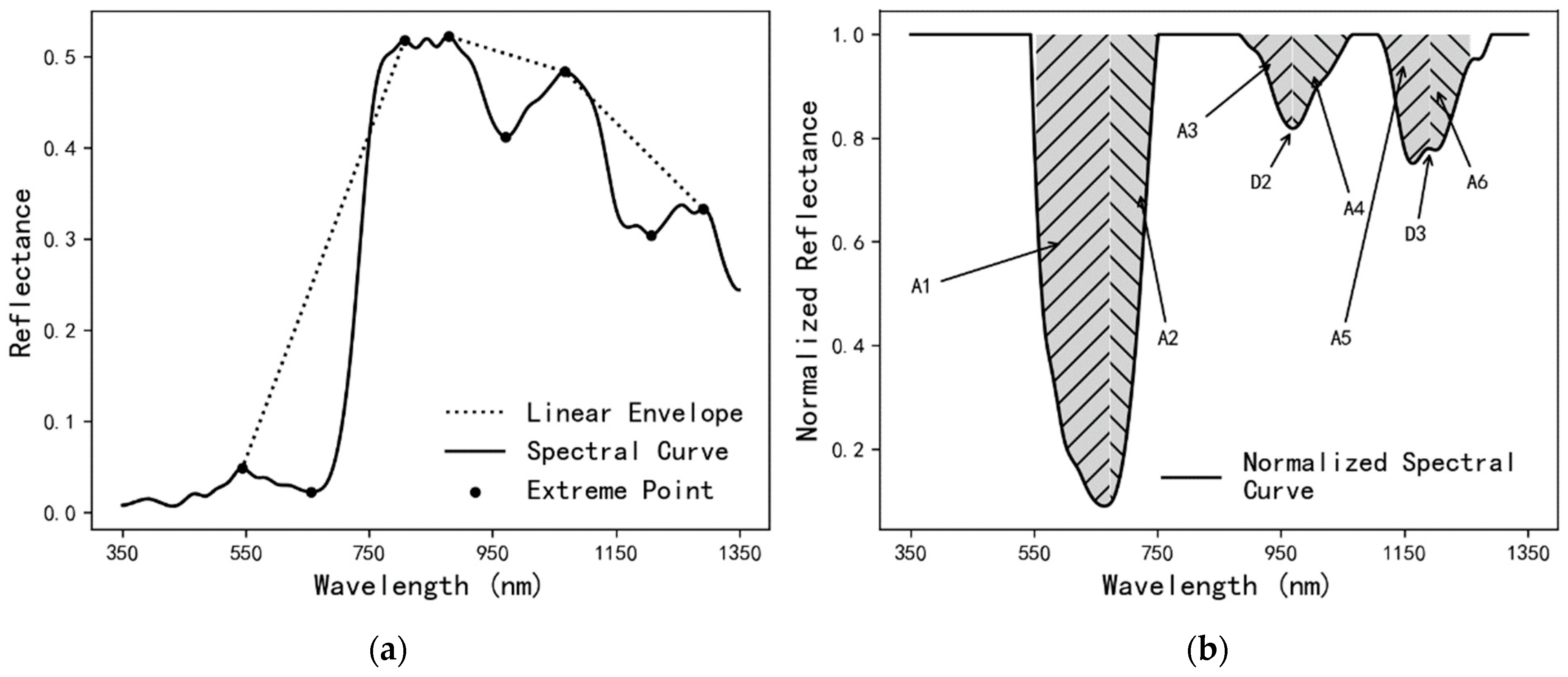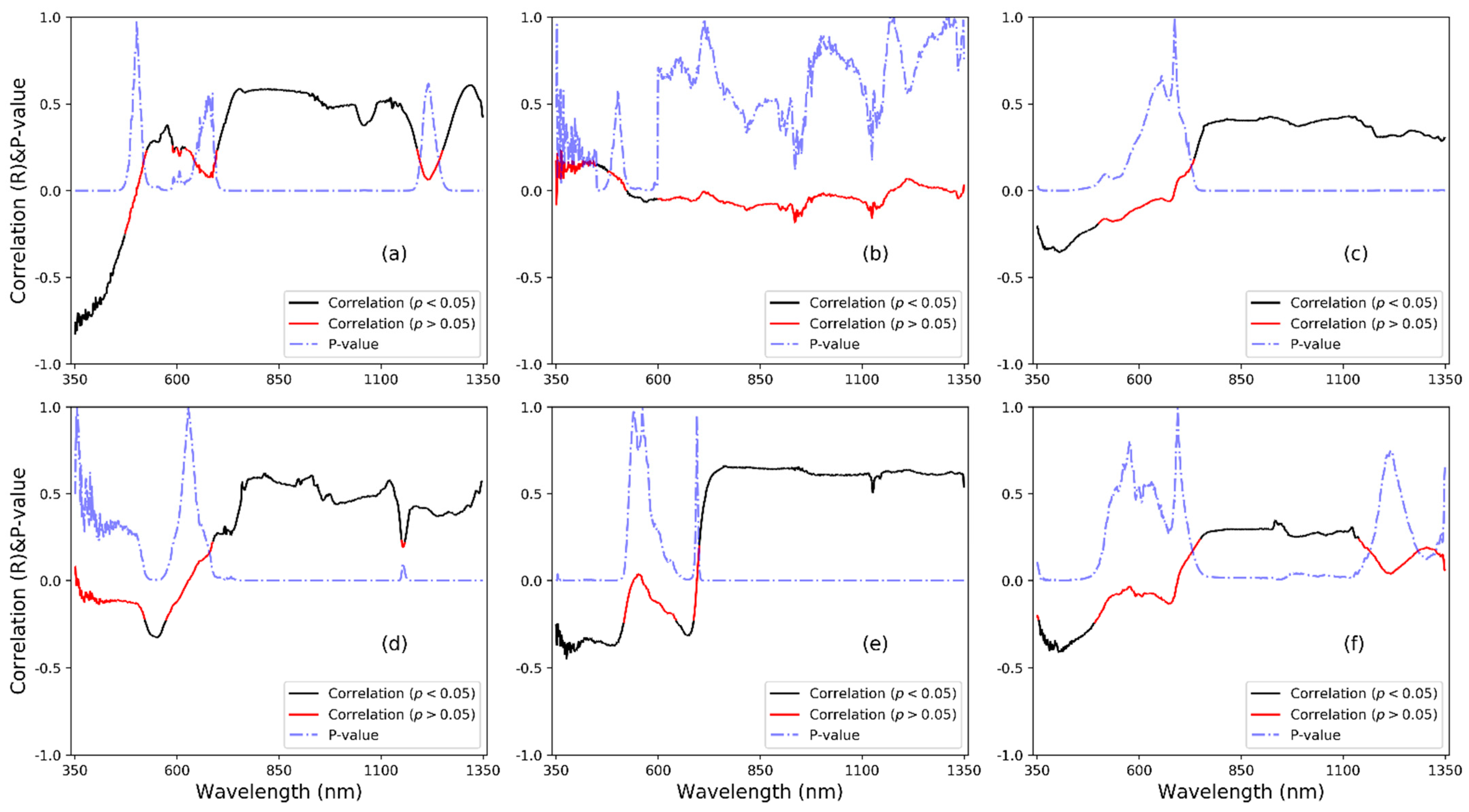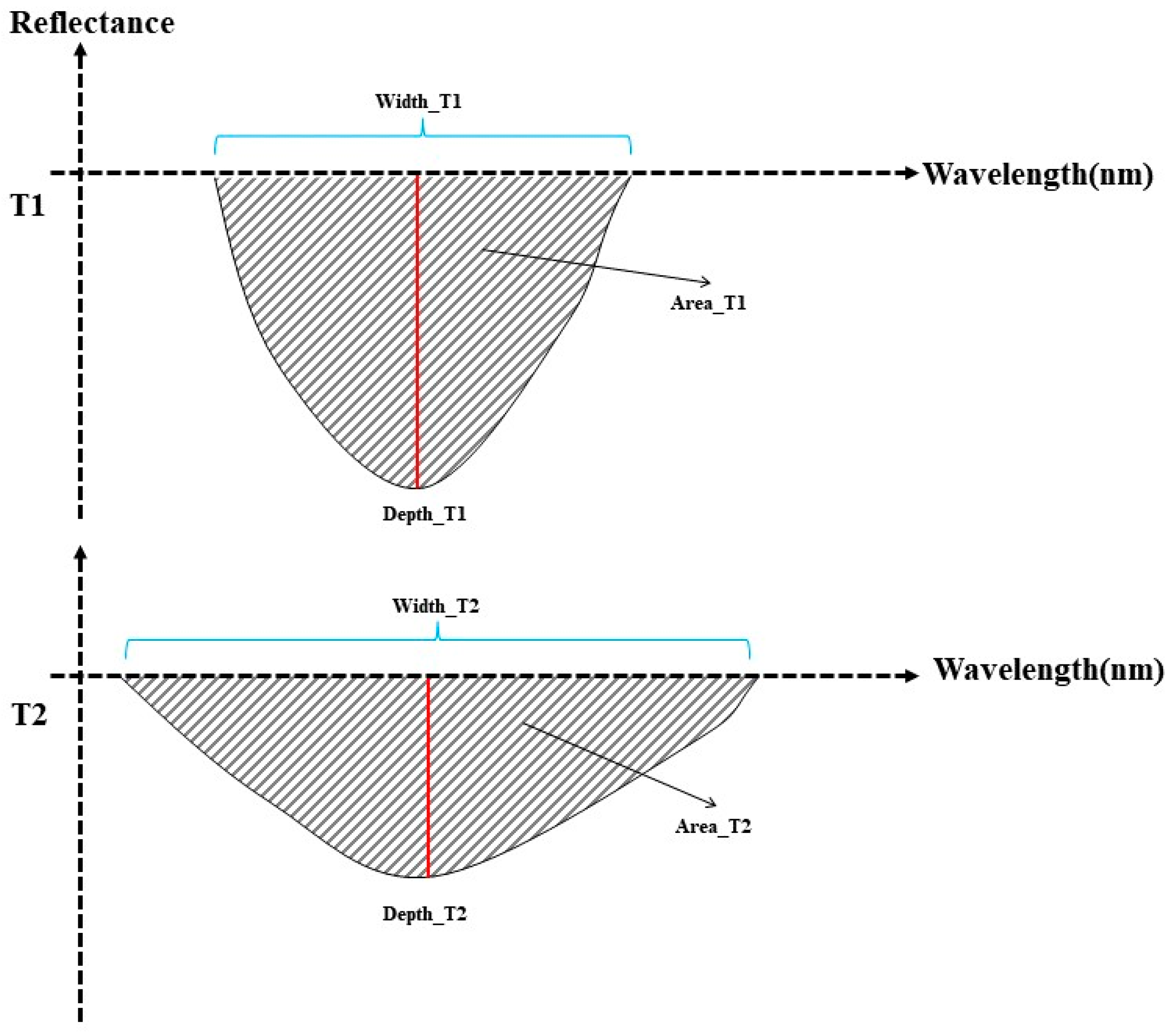1. Introduction
Based on observational data, the surface solar irradiation (SSI) decreased from 1950 to 1990, which is called global dimming, with a mean decreasing amplitude of 5 W/m
2 per decade [
1,
2]. After 1990, SSI increased in Europe and North America (0.66 W/m
2); however, in the southern and eastern regions of China [
3,
4], SSI is still decreasing, while in these regions, the diffuse radiation and diffuse radiation fraction are increasing [
5,
6,
7]. Based on Xie’s study, the diffuse radiation fraction in China has steadily increased after 1994 [
6]. By analyzing the data from 1981 to 2010, Ren found that China’s diffuse radiation has increased by 7.03 MJm
−2 yr
−1 per decade [
5]. The main cause of these phenomena is the increase in aerosol in the atmosphere, which has been confirmed by data analysis and physical models [
6,
8,
9,
10,
11].
Solar radiation, which is the energy source of photosynthesis for food crops, has a significant effect on crop growth, dry matter accumulation, and crop productivity. Through observation, it is found that a reduction in solar radiation will lead to a significant drop in ecosystem primary productivity (GPP) [
12]. However, some studies show that with the decrease in solar radiation, the fraction of diffuse radiation will increase, which can enhance the radiation use efficiency of the canopy [
13]. Further, the increased fraction of diffuse radiation has a strong fertilization effect on crop yield and GPP of ecosystems [
14,
15,
16,
17]. For rice, the increased fraction of diffuse radiation also has a fertilization effect. The LAI, SPAD, and leaf nitrogen concentration of rice increase with the increase in diffuse radiation fraction. This shows that the increase in diffuse radiation fraction can also raise the grain filling rate and increase the yield [
18]. Zheng used a 3D model to simulate the growth of rice. He found that the LAI at the bottom of the rice would increase with the increase in diffuse radiation fraction, which increased the photosynthetic rate of the rice population [
19].
Hyperspectral remote sensing, which possesses high spectral resolution, can acquire a large amount of information to accurately express the effects of various external environmental stresses on rice [
20,
21]. For example, Sahoo indicates that under flood stress, the hyperspectral reflectance of rice canopy in the near-infrared region changes significantly; in addition, its first derivative hyperspectral reflectance reveals a more obvious phenomenon, i.e., a double reflection peak at 680–760 nm [
22]. The temperature stress also has a significant impact on hyperspectral reflectance at visible and near-infrared regions [
23]. More specifically, the increasing temperature leads to an increase in reflectance in the visible region and a decrease in the near-infrared region [
24]. In addition, with the increasing atmospheric concentration of carbon dioxide, the reflectance rates at the green peak and red bandalso show remarkable changes [
25]. Therefore, hyperspectral reflectance makes it possible to monitor rice growth.
Generally, there are three types of methods for monitoring rice growth: empirical statistical, physical, and a hybrid of both. For the empirical model, on the one hand, it is very important to select reasonable hyperspectral parameters. The vegetation indices constructed by reflectance are one of the common hyperspectral parameters. Xie, Viña, and Liang et al. used some specific vegetation indices to monitor the LAI and SPAD values of rice [
23,
24,
26,
27]. Compared with vegetation indices, Kokaly and Herrmann found the model incorporated with absorption band width performs better in simulating LAI [
28,
29]. Fan also highlighted that the rice LAI monitoring model, which uses first and second derivative hyperspectral data, has better accuracy and stability [
30]. Fu and Dong used vegetation index to monitor dry matter weight [
31,
32], but the accuracy of the model mainly depended on the relationship between LAI or SPAD and dry matter [
33]. For this reason, some scholars insist on using vegetation index to monitor the dry matter weight of individual organs to improve accuracy [
34]. On the other hand, partial least-squares regression (PLSR), support vector machine (SVM), random forest (RF), artificial neural networks (ANNs), and other machine learning regression models are used to improve the accuracy and efficiency of monitoring [
35]. Kanning [
36] used hyperspectral imagery to establish an accurate regression model of LAI and chlorophyll based on PLSR. The PROSAIL model, as a widely used physical model, has become one of the most important tools for estimating various vegetation parameters. Wang [
37] used this model to retrieve the LAI and chlorophyll content of rice from unmanned, aerial, vehicle-based hyperspectral images. Furthermore, a hybrid method combining physical models and statistical methods was proposed by Liang [
38] to estimate the LAI values of crops.
In practice, the hyperspectral reflectance characteristics of rice should be extended to a larger geographic space. Therefore, the extraction of spectral information on ground objects (such as the spectral reflectance characteristics of rice-growing regions) and land classification have become hot topics, especially based on hyperspectral images. For example, by comparing N-FINDR, VCA, and other algorithms, it was concluded that the ant colony optimization (ACO) could accurately extract endmembers, which are some pixels including only one ground object in the image [
39]. Further, the high-accuracy model for estimating rice yield was established by integrating vegetation index that recalculated from endmember spectra with abundance data [
40]. On the other hand, with the development of machine learning and deep learning in recent years, it has become possible to process and analyze hyperspectral images to classify land cover. Convolutional neural networks (CNNs) and recurrent neural networks (RNNs) have been proven to efficiently classify hyperspectral images with high accuracy [
41,
42]. Furthermore, considering the topological relationship between pixels, the graph neural network (GCN) has also begun to be used for hyperspectral image classification [
43]. However, GCNs also have some drawbacks, such as high storage and computational cost, and the need to retrain the model when new data are fed. Therefore, a new supervised version of GCNs, called miniGCNs, was developed to solve these problems [
44].
As one of the main food crops, rice accounts for 40% of the total grain production in China. The lower Yangtze River region is an important rice production area in China. Changes in SSI, especially the diffuse radiation fraction, will have remarkable effects on rice growth and yield in this region. In recent years, because of the increasing concentration of aerosols in the atmosphere, the diffuse radiation fraction is changing. However, there are few studies on analyzing rice growth and the hyperspectral reflectance characteristics of canopy under this changing situation. Our research was based on rice field experiments in two years and comprised two main parts. Firstly, with the experimental data, the change in LAI, SPAD, and hyperspectral reflectance characteristics, including the band reflectivity, red-edge parameters, and absorption features parameters, was analyzed in two scenarios. In the next part, the paper attempted to explore the underlying reasons for these different hyperspectral reflectance characteristics and to provide useful information for relevant research.
4. Discussion
Shao and Shin et al. indicate that shading treatment will increase the SPAD and LAI values of rice [
49,
50], which is consistent with the experimental results (CK compared with T1 and T2) presented in this paper. In summary, the shading treatment caused a decline in rice canopy spectral reflectance in the visible region and an increase in the near-infrared region. It also increased red-edge parameter values of
,
, and
. However, the treatment reduced the values of A1, A2, A4, D2, A5, and D3.
For the comparison of T1 and T2, when the diffuse radiation fraction improved, the SPAD and LAI values of rice increased significantly, and the rice canopy spectral reflectance also decreased in the visible region and increased in the near-infrared region. The hyperspectral reflectance of rice canopy in different wavelengths is affected by rice chlorophyll content, LAI, cell structure, leaf structure, etc. [
51]. To determine the reasons for the changes in the rice canopy spectra under the increasing diffuse radiation fraction, the correlation and
p-value between the rice SPAD, LAI, and the spectral reflectance in DAH 14d, DAH 21d, and DAH 28d were calculated, as shown in
Figure 6.
Figure 6a,c show that the strongest negative correlation appeared at 355 nm (
R = −0.79) in DAH 14d and 405 nm (−0.40) in DAH 28d. However, the correlation in DAH 21d did not pass the test of significance (
Figure 6b). The rice SPAD was negatively correlated with the reflectance of the blue-violet light band. In other words, under the increasing diffuse radiation fraction, the increasing SPAD resulted in a stronger absorption of visible light. Li revealed that the shading treatment can lead to an increase in chlorophyll b [
52], which is an important factor affecting the rice canopy spectra in the visible region [
53,
54]. This is consistent with the results presented in this paper.
Figure 6d–f show that the strongest positive correlation appeared at 814 nm (
R = 0.62) in DAH 14d, 806 nm (0.66) in DAH 21d, and 934 nm (0.35) in DAH 28d. There was a strong positive correlation between the LAI value of rice and the spectral reflectivity in the near-infrared region. Therefore, under the increasing diffuse radiation fraction, the increasing LAI in rice led to increasing reflectivity in the near-infrared region [
55,
56]. In addition, the canopy spectra of T1 and T2 had the largest difference between 800 nm and 900 nm, which is affected by leaf and canopy structure [
57]; that is, an increase in diffuse radiation fraction may cause changes in rice leaf and canopy structure [
2].
The red-edge parameters of T1 and T2 had significant changes as the SPAD value of rice leaves changed [
58,
59]. The values of
and area of T2 were greater than those of T1, with no significant difference in
. However, Evri [
60] pointed out that, without shading treatment, the red-edge parameter
has a strong correlation with changes in rice SPAD, and the SPAD monitoring model based on
has high accuracy, which indicates that when the diffuse radiation fraction increased, the model established with the red-edge parameters
and area could have higher accuracy.
For the absorption features parameters, there was also a significant difference between T1 and T2. Under the increasing fraction of diffuse radiation, both parameters A1 and A2, which are the areas of the left and right of the first absorption band (the average wavelength was in the range of 553–788 nm.), decreased. The change in LAI, which has an impact on the shape of the first absorption band, is the main reason for the decrease in A1 and A2 [
61]. The parameters A3, A4, and D2 are the left area, right area, and the depth of the second absorption band. Additionally, the parameters A5, A6, and D3 are the left area, right area, and the depth of the third absorption band. The results from
Table 6 show that the parameter values of A4, A5, D2, and D3 of T2 experienced a significant decline when compared with T1. In addition, the normalized widths of the second and third absorption bands (W1, W2) calculated with Equations (6) and (7), shown in
Table 7, reveal that there was a significant increase in parameter values of W1 and W2 of T2. For example, in comparison with T1, W1 of T2 increased by 17.50% and 11.16% at DAH 14d and DAH 21d (2016), respectively, and W2 increased by 7.87%, 11.76%, and 30.77% at DAH 14d, DAH 21d, and DAH 28d, respectively. In general, the depth and area of the second and third absorption band of T2 significantly reduced, but the width increased. The difference in absorption band shape between T1 and T2 is shown in
Figure 7. In fact, the second and third absorption bands (the average wavelength was in the range of 874–1257 nm) are mainly affected by water vapor absorption [
62,
63,
64]. Therefore, an increasing diffuse radiation fraction could also affect the water vapor absorption process of rice.
It is shown that an increase in diffuse radiation fraction had a positive effect on rice growth, including an increase in LAI, population photosynthesis capacity, and yield [
13,
17,
18,
19,
43], which is also the reason for the changes in canopy spectra and red-edge parameters in this experiment.














